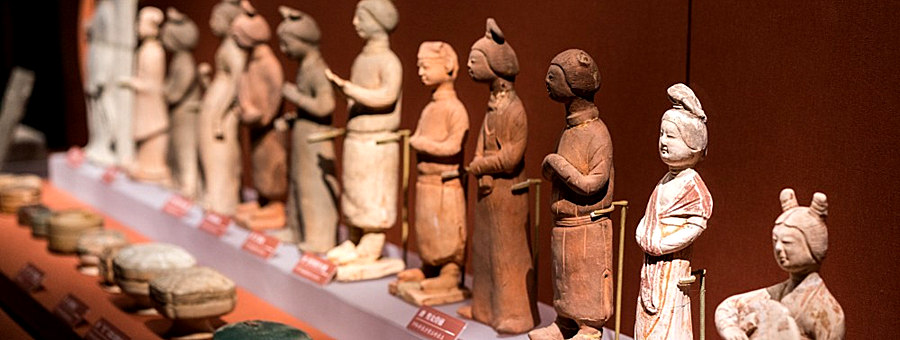China is one of the world's four ancient civilizations with a long history. Over the long time, various cultures have been created and integrated in China, which have not only aroused domestic research, but also attracted the curiosity of the rest of the world. If you are interested in the development of Chinese history, or you are curious about Chinese ideology and culture, then Chinese museums must be your type. We refer to the 2019 domestic ranking to list the top 10 museums in China. Each museum has its own unique outstanding masterpieces, you can see the architecture, art, military, ethnic and many other aspects of cultural relics and digital display; in some museums there are real performance presented to the audience. Come and see!
1. The Palace Museum of Forbidden City, Beijing
In Chinese: 故宫博物院,紫禁城
Location: No. 4 Jingshanqian Street, Dongcheng District, Beijing
Opening time: (closed on Mondays)
08:30 – 15:30 (Nov 1st to the next Mar 31st; last entry at 15:40)
08:30 – 16:00 (Apr 1st to Oct 31st; last entry at 16:10)
Entrance fee: (need to be booked in advanced)
RMB40 (non-included Treasure Hall & Watch Hall; Nov to the next Mar)
RMB60 (non-included Treasure Hall & Watch Hall; Apr to Oct)
How to get there:
Take Bus 1, 2, 52, 59, 82, 99, 120, 126 or Metro Line 1, and get off at Tiananmen Dong (East Tiananmen) Station, walking for 900 m to reach the south gate.
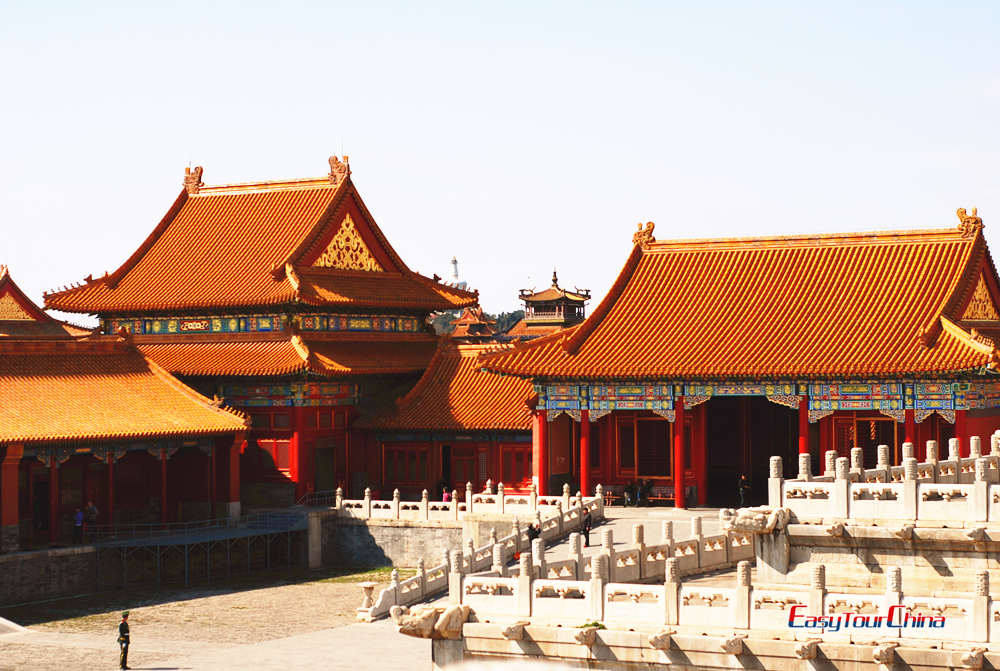
The Palace Museum is actually the Forbidden City, which keeps the most complete preservation of the largest wooden structure of ancient buildings in the world, is respected as “Top 1 Palace around the world” listed into world cultural heritage. A series of palaces make up this comprehensive Chinese museum built in Ming and Qing dynasties. It is also a relatively large museum of ancient culture and art in China.
The exhibits are mainly collections of emperors and tributes from various countries. You can not only appreciate a large number of precious cultural relics that accounts for one sixth of the country's total cultural relics; you can also explore the place where feudal emperors and concubines lived including three palaces and six courtyards. The most attractive show in Watch Hall is on at 11:00 and 14:00 every day; if your time allows, it’s the must-see performance.
Recommend China Beijing Tours including the Palace Museum (Forbidden City):
- 4-day Beijing Highlights Tour
- 5-day Beijing Family Tour
- 5-day Beijing Food Tour - Eat Like a Local Beijinger
2. National Museum of China, Beijing
In Chinese: 中国国家博物馆
Location: No. 16 Dongchang'an Street, Dongcheng District, Beijing
Opening time: (closed on Mondays)
09:00 – 17:00 (last entry at 16:00)
Entrance fee: (need to be booked in advanced)
Free
How to get there:
Take Bus 1, 2, 52, 82, 120 or Metro Line 1 to Tiananmen Dong (East Tiananmen) Station, or take Metro Line 2 and get off at A or B Exit of Qianmen Station.
The total construction area of National Museum of China is nearly 200,000 square meters made it the largest single museum in the world. Located on the east side of Tiananmen Square, opposite the Great Hall of the People where China’s top conferences are held. Divided into 5 floors and 48 exhibition halls, the museum has one of the richest collections of Chinese cultural relics including more than one million pieces. The exhibition system consists of basic exhibition, special exhibition, international exchange exhibition and temporary exhibition, covering all stages from ancient to modern times. The clothing and lifestyles of different times in 20th century have a restorative look here.
3. Henan Museum, Zhengzhou
In Chinese: 河南博物院
Location: No. 8 Agro Road, Jinshui District, Zhengzhou City, Henan Province
Opening time: (closed on Mondays)
09:00 – 17:30 (last entry at 17:00)
09:00 – 17:00 (winter; last entry at 17:00)
Entrance fee: (need to be booked in advanced)
Free
How to get there:
Bus B1, 83, 32, 42, 61, 69 and 96
Henan museum, a modern Chinese museum of history and art, is one of the most visited museums in China. It combines 5,000 years of Henan history and culture became the best window to know Henan. The museum has eight exhibition halls in chronological order including collections of more than 170 thousand pieces; most of them are precious cultural relics, among which bronze wares, jade stone tools, ceramics and stone carvings are the most distinctive ones. They are the cultural and art halls that witness and display the origin, formation and development of Chinese civilization. Every Tuesday to Sunday, there will be performances of Chinese ancient music in the museum; the 20-minute performances are shown at 11:00 and 16:00.
4. Shaanxi History Museum, Xian
In Chinese: 陕西历史博物馆
Location: No.91 East Xiaozhai Road, Yanta District, Xian
Opening time: (closed on Mondays)
09:00 – 17:30 (Nov 15th to the next Mar 14th; last entry at 16:00)
08:30 – 18:00 (Mar 15th to Nov 14th; last entry at 16:30)
Entrance fee: (need to be booked in advanced)
Free
How to get there:
Take Bus 21, 105 or 259 to Cuihua Road Station.
Take Metro Line 1 or 2 to Xiaozhai Station.
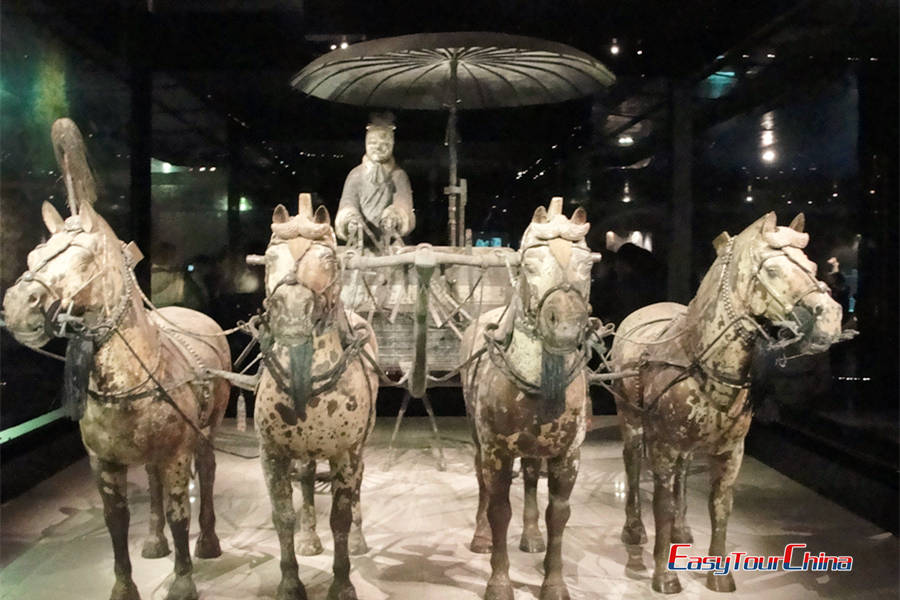
Located to the northwest of the Big Wild Goose Pagoda in Xi’an, Shaanxi History Museum is China's first large modern national museum that marks a new milestone in the development of Chinese museums. The museum concentrates the essence of the history of China, known as the "treasure house of the Chinese nation", is an art palace displaying the ancient Chinese civilization and the history and culture of Shaanxi Province.
The collection contains more than 370,000 cultural relics, ranging from simple stone tools of ancient humans to various implements of social life before 1840, with a span of more than one million years. Among them, bronze wares of Shang and Zhou dynasties are exquisite, ancient terracotta warriors in various shapes and forms, gold and silver wares of Han and Tang dynasties are distinguished in the country, Tang tomb murals are unparalleled. It is the best place for you to experience Chinese culture in the ancient capital of a thousand years.
Recommend China Xian Tours to Shaanxi History Museum:
- 3-day Xian Highlight Tour
- 4-day Xian Discovery Tour for Active Family
- 3-day Relaxing Xian Tour for Seniors
5. Shanghai Museum, Shanghai
In Chinese: 上海博物馆
Location: No.201 Renmin Da Dao (Renmin Avenue), Huangpu District, Shanghai
Opening time: (closed on Monday)
09:00 – 17:00 (last entry at 16:00)
Entrance fee: (booked in advanced)
Free (RMB40 for renting translator)
How to get there:
Take Bus 18, 46, 49, 71, 108, 112, 123, 127, 145, 167, 311, 312, 318, 324, 454, 518, 925, 930, 934, 936, 952 or 980 to your destination.
Take Metro Line 1, 2 or 8 and get off at Renmin Square Station.
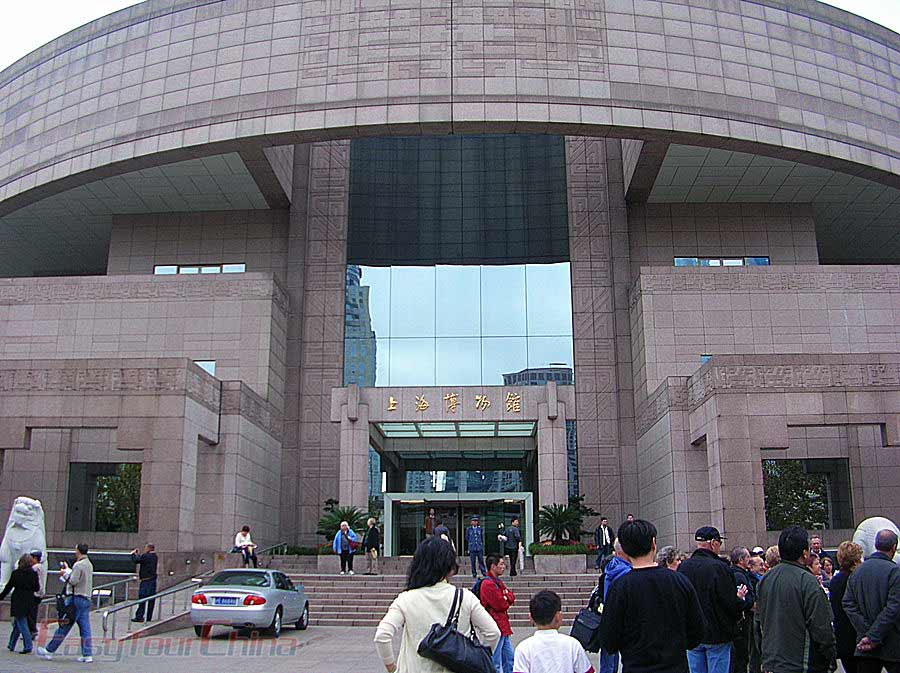
One of the top museums in China, Shanghai Museum is a large-scale museum of ancient Chinese art. The museum houses over 1.02 million pieces of historical relics from various dynasties and generations, including more than 140,000 precious cultural relics, with the most distinctive features of ancient bronze ceramics, calligraphy and paintings. The collection of calligraphy and painting in Shanghai Museum is reputed as a pearl of half China and has many magnificent works of famous ancient artists. The museum is especially famous for its collection of bronze pieces.
Top China Tours to Shanghai Museum:
- 4-days Essential Shanghai tour with Hangzhou
- 8-day Golden Triangle Tour to Beijing, Xi'an & Shanghai
- 16-day China Discovery Tour
6. Nanjing Museum, Nanjing
In Chinese: 南京博物院
Location: No. 321 East Zhongshan Road, Xuanwu District, Nanjing
Opening time:
09:00 – 12:00 (Mondays; last entry at 11:00)
19:00 – 17:00 (Tuesday to Sunday; last entry at 16:00)
Entrance fee: Free
How to get there:
Take Bus 5, 9, 34, 36 or 55 to Zhongshanmen Station.
Take Metro Line 2 to Ming Palace Station and walk about 620 m.
Nanjing is the ancient Chinese capital of the six dynasties that makes the museum a national first-class museum now. Nanjing Museum is the second largest museum in China and one of the three major museums in China. Over 420,000 valuable exhibits scattered on history hall, art hall, the special hall, digital display room, modern China hall and the intangible cultural heritage exhibition hall.
There are both heirlooms and archaeological excavations in the museum. Throughout the dynasties, there are treasures and masterpieces, including bronze, jade, ceramics, gold and silver vessels, bamboo, wood, lacquer, silk embroidery, calligraphy, painting, seals, monuments and statues, and so on. Not only to visit, but also the historical excavation and research significance.
7. Liaoning Provincial Museum, Shengyang
In Chinese: 辽宁省博物馆
Location: Northeast of Central Square in Hunnan District, Shengyang City
Opening time: (closed on Mondays)
09:30 – 16:30 (Nov 1st to the next Mar 31st; last entry at 15:30)
09:00 – 17:00 (Apr 1st to Oct 31st; last entry at 16:00)
Entrance fee: Free
How to get there:
Bus 130 or 108 to No. 5 bus terminal
The Liaoning Provincial Museum is the best place to learn about the history of the provincial capital. As one of the large art and history museums in China, the museum has a collection of national treasures such as the great tripod with Taotie pattern on the surface of Shang dynasty and the duck-shaped statue of Western Zhou dynasty. You can also visit the relics of ancient nationalities such as the Kidan, Manchu and Xianbei unique to the Liaohe culture.
As the inheritor and protector of the fine traditional culture of the nation, Liao Provincial Museum displays the achievements of civilization in various historical periods of ancient China. The archaeological relics unearthed in Liaoning and historical and artistic relics are the main objects, which are divided into 17 categories, including calligraphy, painting, silk embroidery, bronze and ceramics, etc. Here you can see many outstanding exhibits that are different from those of the central China.
8. Hunan Provincial Museum, Changsha
In Chinese: 湖南省博物馆
Location: No.50 Dongfeng Road, Kaifu District, Changsha City
Opening time: (closed on Mondays)
09:00 – 17:00 (last entry at 16:00)
Entrance fee: Free
How to get there:
Bus 3, 113, 112, 131, 136, 146, 150, 302 and 901
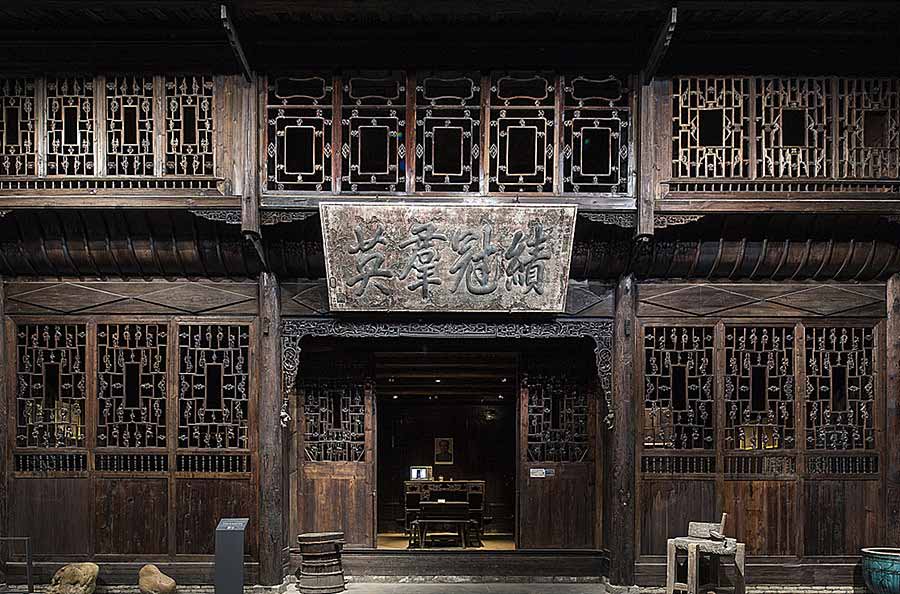
Hunan Provincial Museum is the largest historical art museum in Hunan Province. It has a collection of more than 180,000 cultural relics, especially the unearthed relics from Mawangdui Han Tomb, Shang and Zhou dynasties’ bronze vessels, Chu cultural relics, ancient ceramics, calligraphy and painting, and modern cultural relics. Most of the exhibits highlight Hunan's history and regional characteristics.
The three treasures of the Hunan Provincial Museum are the straight-sleeved plain silk robe of the Western Han Dynasty, the T-shaped silk painting from the No. 1 tomb of Mawangdui and the square tripod with human face pattern from Dahe of the Shang Dynasty .
9. Zhejiang Provincial Museum, Hangzhou
In Chinese: 浙江省博物馆
Location:
Wulin Branch - E District, Xihu Culture Plaza, Xiacheng District, Hangzhou
Gushan Branch – No. 23 Gushan Road, Xihu District, Hangzhou
Opening time: (closed on Mondays)
09:00 – 17:00 (last entry at 16:30)
Entrance fee: Free
How to get there:
Take Bus 2, 19, 72, 78, 105, 106, 214, 217, 219 or 814 to Zhongbei Bridge Station.
Zhejiang Provincial Museum consists of Wulin Branch and Gushan Branch which gathers the largest collection of Zhejiang Province. The pavilion building is a combination of single buildings and corridors with regional characteristics of the south China. The function of display and research are in one. The museum has over 100,000 cultural relics, including pottery, lacquer, wood, bone and ivory from Hemudu culture, jade and silk from Liangzhu culture. Bronze wares of the state of Yue dynasty, celadon of the Southern Song dynasty, Kuaiji ancient bronze mirror and Huzhou ancient bronze mirror are all masterpieces of this museum. And the works of Zhejiang calligraphers and painters in the Ming and Qing dynasties are all famous cultural treasures.
10. Sichuan Museum, Chengdu
In Chinese: 四川博物院
Location: No. 5 Qinghua Road, Qingyang District, Chengdu
Opening time: (closed on Mondays)
09:00 – 21:00 (summer; last entry at 20:30)
09:00 – 20:00 (winter; last entry at 19:30)
Entrance fee: Free
How to get there:
Bus 19, 35, 47, 82, 88, 407, 309A or 901 to Songxian Bridge Station
Built in 1941, the Sichuan museum has three floors and is the largest comprehensive museum in the southwest China. The first floor is dominated by the pottery and stone art exhibition of the Han dynasty in Sichuan province. The second floor is mainly composed of Bashu bronze hall, Dafeng hall (calligraphy and painting exhibition hall of Zhang Daqian, a famed Chinese painter), classic Chinese calligraphy and painting hall and porcelain hall. The third floor is composed of the light of Tibetan Buddhism, the stone carving hall of Wanfo Temple, the art museum of ancient style and elegance, which mostly reflects the folk customs of Sichuan. And it’s very close to Du Fu Thatched Cottage, Wuhouci and Jinli Old Street, you can take your time there after visiting the museum.
